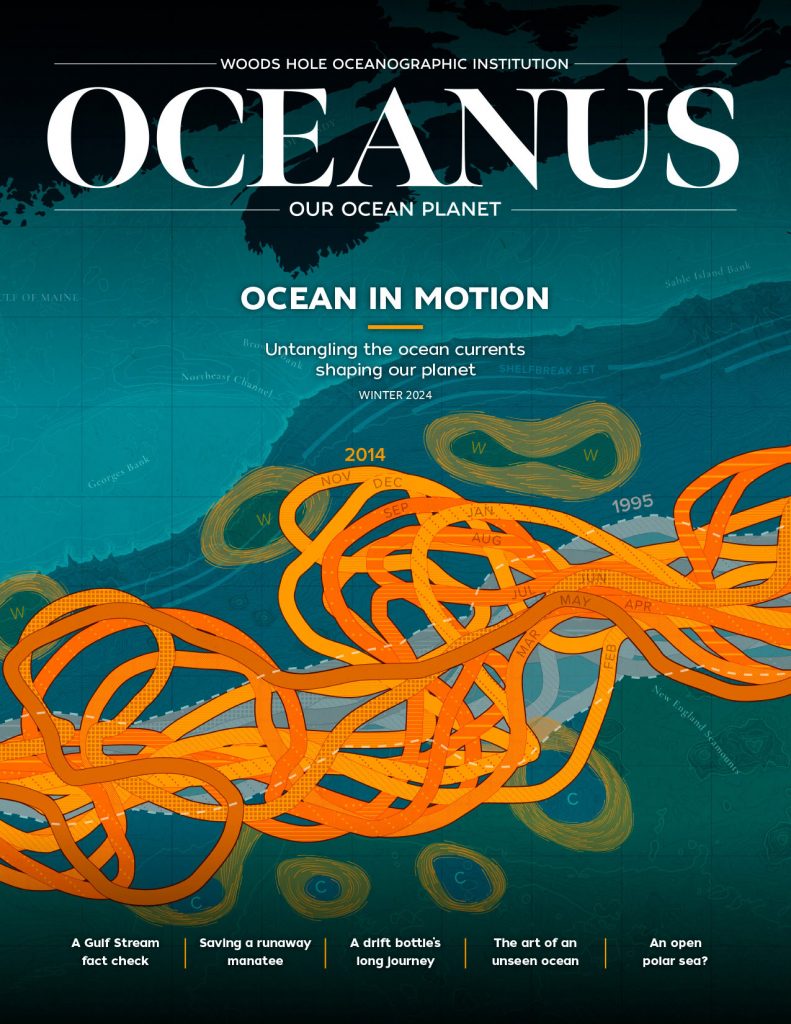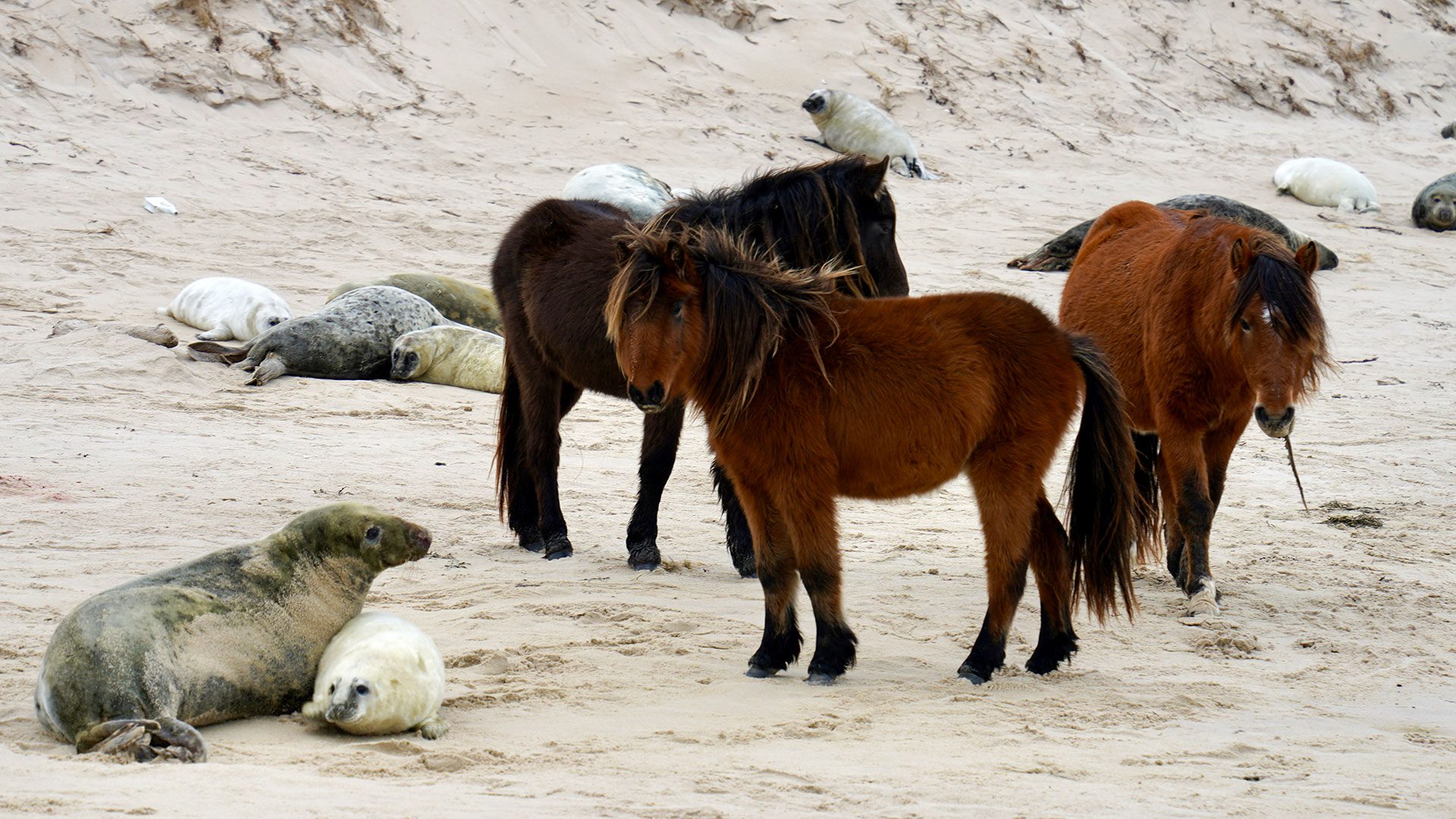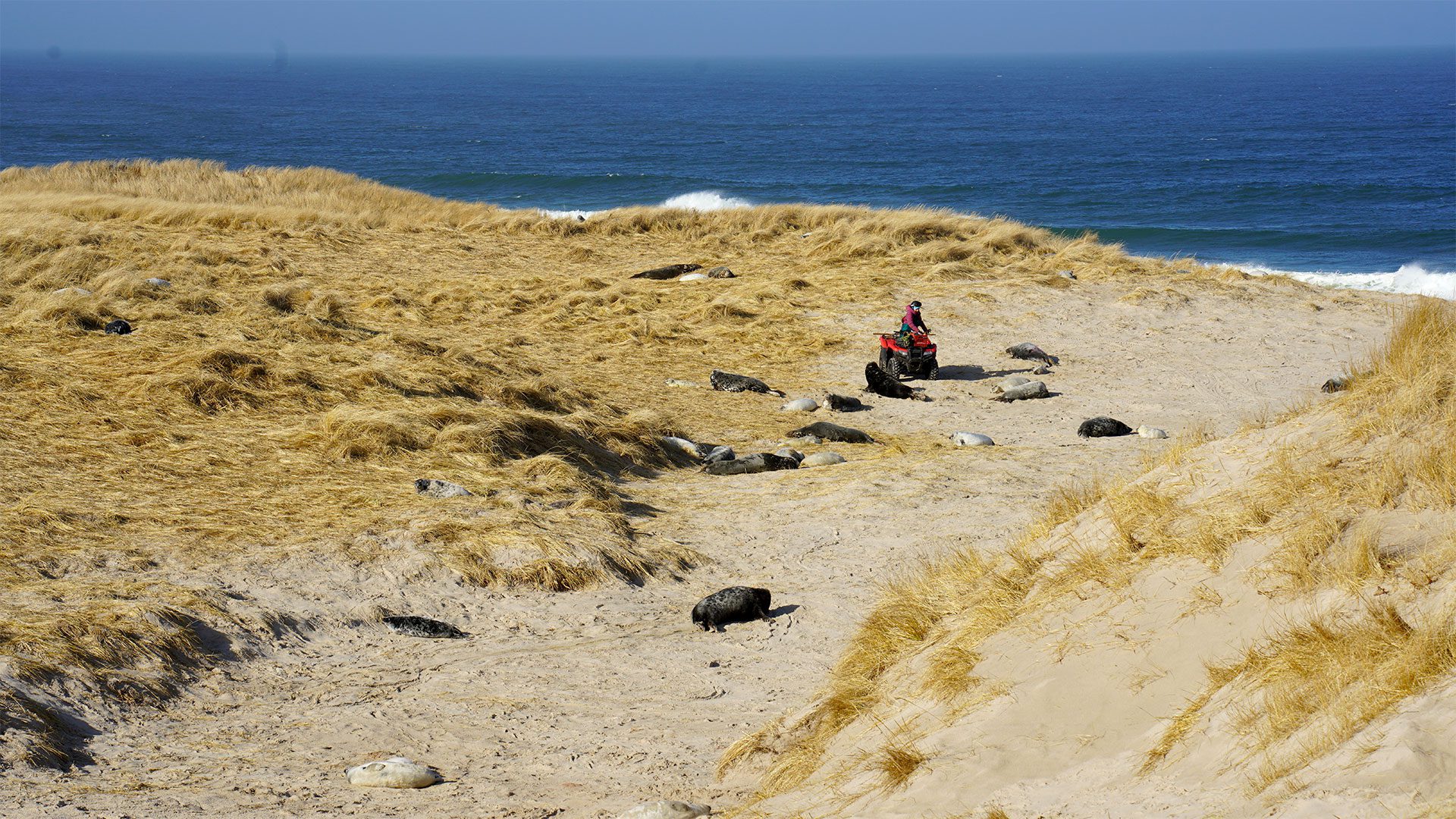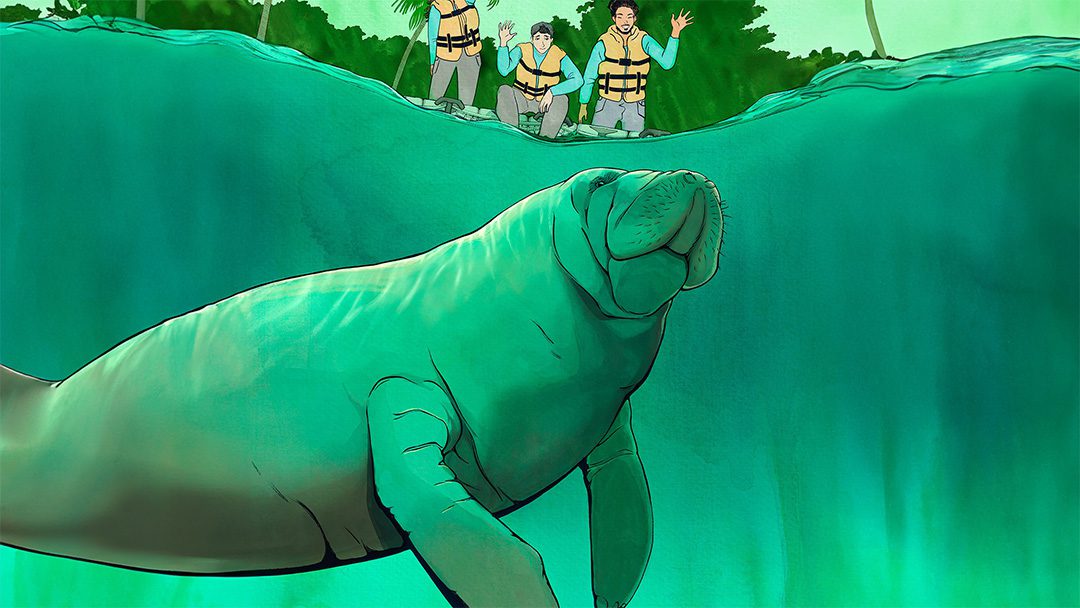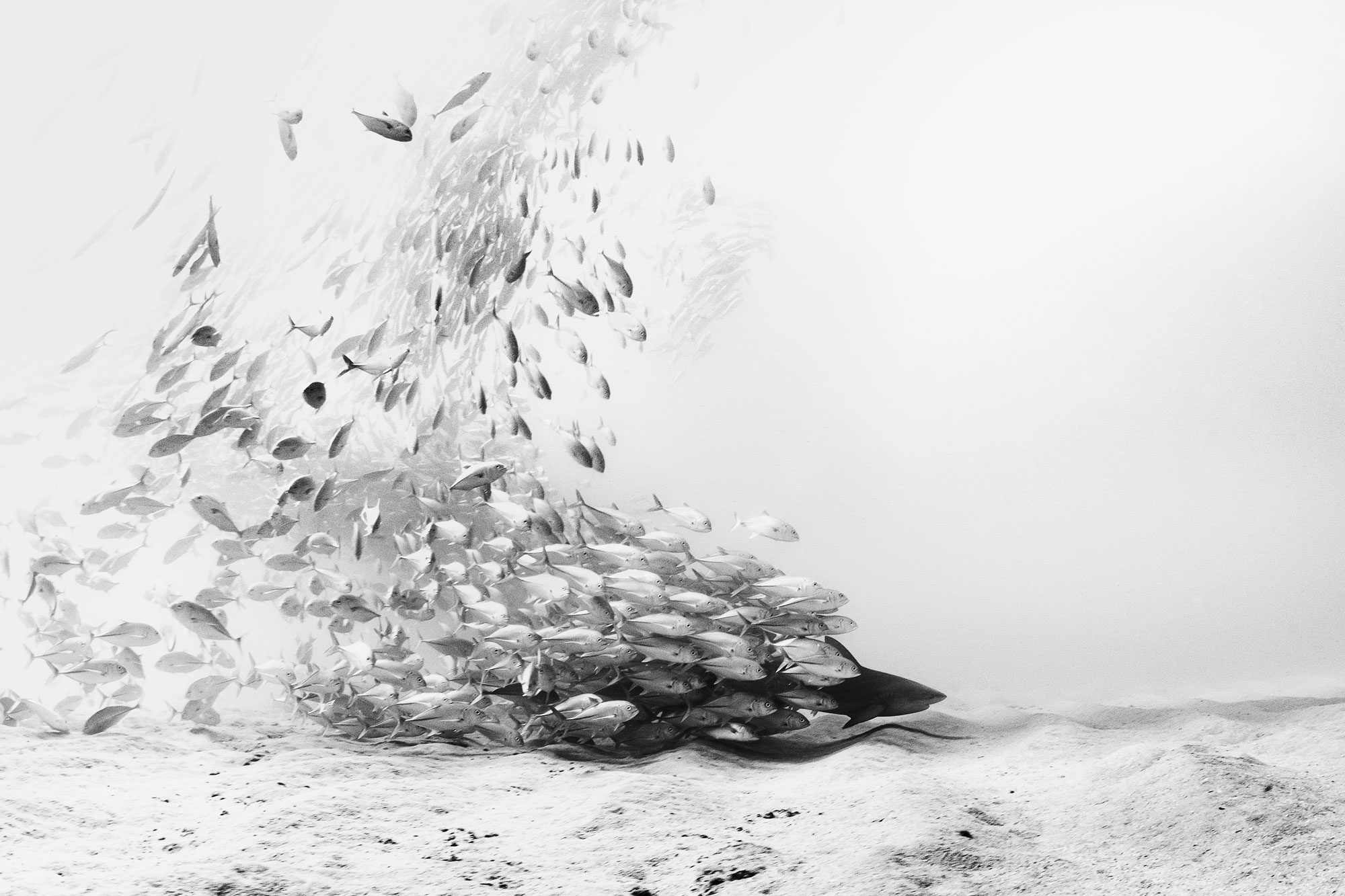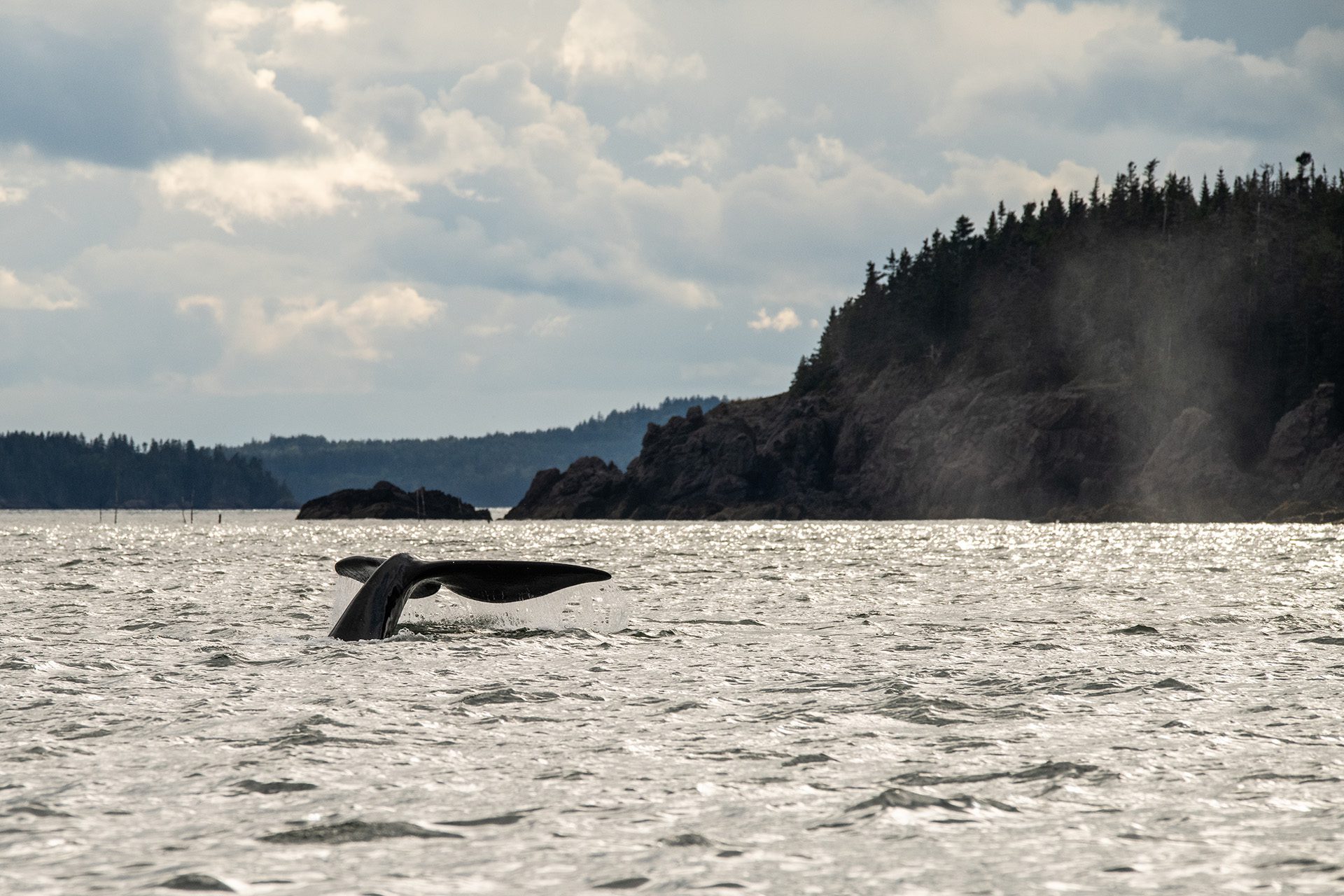Ocean Life
The value of iron for a seal
This past winter, on a cold, sandy island about 200 miles off the coast of Nova Scotia, a pair of shaggy wild horses supervised the efforts of a small group of seal researchers. “They just stood there and watched us work for a little while,” said Michelle Shero, a marine biologist at WHOI. “They seemed very curious about what we were doing.”
As the horses looked on, Shero and her team worked carefully to capture, weigh, and measure a mother and pup pair of gray seals. The researchers drew blood and milk samples from the animals and took whisker clippings to analyze later. The stout brown horses, apparently bored with the research process, headed further down the noisy beach, crowded with hundreds of other seals.
Sable Island, a 12-mile crescent-shaped sandbar, is home to around 500 feral horses that have been living off the island’s beach grass since they were released there in the 1700s. In winter, they are joined by close to 500,000 gray seals—the largest breeding population of gray seals in the world. Shero and her collaborators—including researchers from Texas Tech University, the University of Alaska Fairbanks, and Fisheries and Oceans Canada—spent over a month living in a converted lighthouse keeper’s home on the island, studying gray seal mothers and pups.
“There are hundreds of thousands of seals, and they’re in every nook and cranny you can think of,” Shero said. “At the house, we’ll often see seals walking past the kitchen window. They’re in the yard, scattered on our walkways, and some of the pups even hang out under the stairs to our sheds. They’re just everywhere.”
Shero and Texas Tech University biologist Jennifer Burns are investigating how much iron seal moms get from their food and how that iron intake may impact their pups’ ability to dive. Most seal pups don’t make it through their first year, and the researchers want to figure out whether higher iron intake makes a difference in the pups’ survival. “Everyone has been focused on the abundance of prey and how many calories seals are able to take in, but maybe just as important is getting the iron that they need,” Shero said.
Seals need iron to form myoglobin and hemoglobin—proteins that help their bodies hold oxygen, giving them the ability to dive under water for long periods. Shero’s previous work, conducted on Weddell seals in Antarctica, demonstrated that mother seals sacrifice some of their dive capacity while nursing. They give away so much iron in their milk that they can’t produce the hemoglobin and myoglobin they need for long, deep dives and have to catch food nearer to the surface.
The team is in the middle of a three-year study to get the pup’s side of the story. Each year, Shero, Burns, and their colleagues head to Sable Island to collect data from 12 mother and pup pairs over the breeding season, starting only a few days after the pups are born.
“We’re trying to get from the environment—what the animals are eating and how much iron is in those species—to how much iron the moms have, to how much they can afford to give the pups, and then how well the pups do after they’re weaned,” Shero said. “We’re trying to get the whole timeline.”
The first step is to determine how much iron is in the adult seals’ diets and how that changes throughout the year. Gray seals catch and eat a variety of fishes, crustaceans, and squid, all of which have different amounts of iron. The seals’ whiskers act as a sort of dietary timeline, incorporating molecular signatures from various food sources as they grow. Using a technique called stable isotope analysis, the researchers can identify different signatures in a seal’s whiskers and match them to potential prey items. Shero and her team then use prey samples provided by Fisheries and Oceans Canada to estimate the iron content in each seal’s diet. They also take blood samples from the mother to determine how her hemoglobin levels change while the pup is nursing.
To understand the role that iron plays in a pup’s development, the researchers are giving iron supplements (similar to what a person who is anemic might receive) to half of the pups in the study. Led by Shero and Burns, the team is tracking the levels of several physiological markers in the pups, including the various hormones that help with iron uptake, iron-containing enzymes responsible for metabolism, and oxygen-storing hemoglobin and myoglobin, until the pup is weaned.
Shortly before the pups start learning to forage on their own, the researchers attach satellite trackers to them. The trackers provide dive data through the pups’ first year, detaching when they go through their first molt. The researchers hope to determine whether pups that receive an iron supplement can dive longer and deeper more quickly than other pups.
“If iron gives them a ‘leg up,’ that should have important implications for survival,” Shero said. “And if this is true for gray seals, it’s probably true for other seal species as well.”
After being hunted to near-extinction, gray seal populations have rebounded dramatically in recent decades, and researchers think that Sable Island may be reaching its carrying capacity—the maximum amount of seals that the ecosystem can support. However, warming oceans could impact these animals, shifting the ranges or reproductive timing of the prey species they depend on. Shero and her colleagues hope that their iron research will help understand when gray seals are limited in their ability to dive and, therefore, most vulnerable to any shifting availability of their prey.
“Climate change is going to affect not only the abundance of prey but also the predictability of prey for these animals,” Shero said. “How that matches up with seals’ fluctuating oxygen storage capacity is going to be really important.”
This work is funded by the National Science Foundation.
